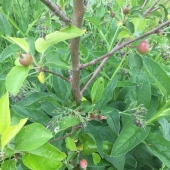Shelah Horvitz wrote:Yes, it's edible, but there is an important use for this. It is highly effective against lyme disease.
I am glad Shelah brought this up. I have had Lyme a couple of times now and have used Knotweed tincture that my wife makes as part of my treatment. Great and important medicine, very high in resveratrol. It is hard to find a source that is verified as not poisoned in my town, as the city spays it with nasty chemicals as often as it can find, (and even actively tries to mobilize the population to take part as "Duluth Invaders." The medicinal, along with the edibility and excellent bee forage it provides, are among some of its attribute. I have eaten the young shoots sauteed, I think they are tasty, a lemony/ sour flavor.
Tao Orion
https://permies.com/t/55694/plants/Tao-Orion-author-War-invasive discusses the species in her recent book and looks at some other uses, such as building the base of compost piles with old canes to allow oxygenation and working with the Knotweed on riparian restoration using on-going management strategies to cut and build organic gabions to slow increased water flows, especially in light of the largely absent beavers that served a similar purpose in so much of North Americas historical waterways.
Not to discount it growth rate and ability to disperse itself (I read recently that all individuals in N. America are female clones, spreading exclusively by rhizome in the introduced areas, not sure if that is true). I have witnessed that first hand. Orion makes the crucial point of placing the "invasive" phenomenon in the wider ecological context, seeing historical disturbances that have taken place and the ones taking place right now, and understanding the organism as a part of this whole and not in isolation.
I guess point being try to make your 'problems' into solutions. Get a yield, better yet get a couple, while you manage it by cutting the growth on a regular basis, the rhizomes will eventually succumb if you are diligent and patient (and give it a few years).








